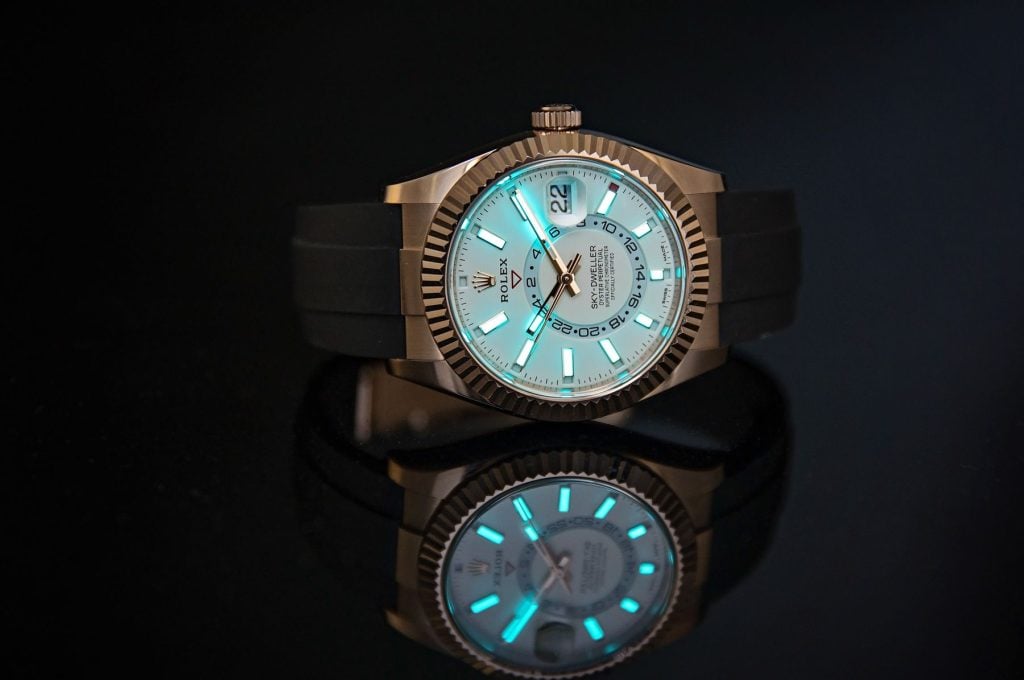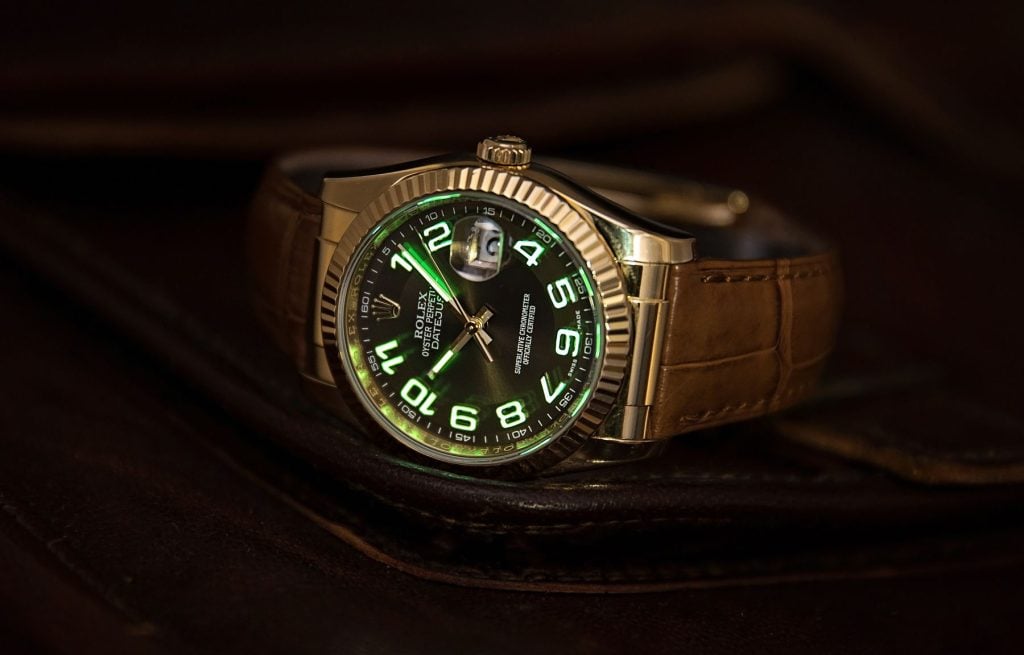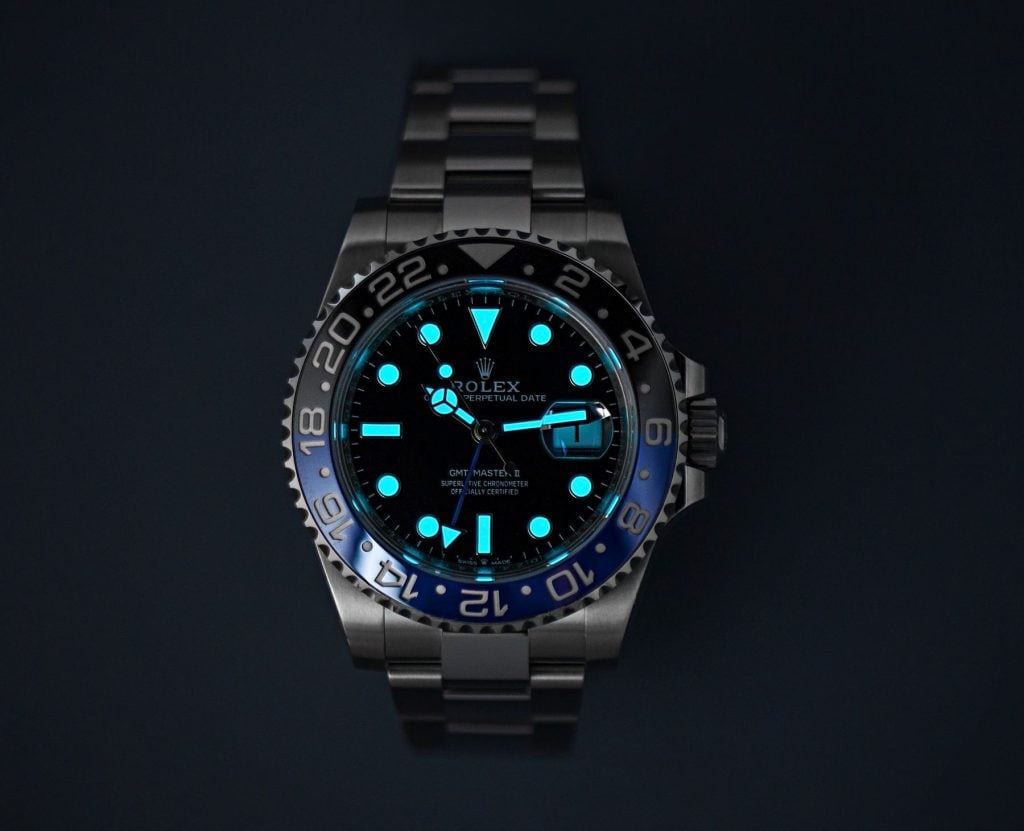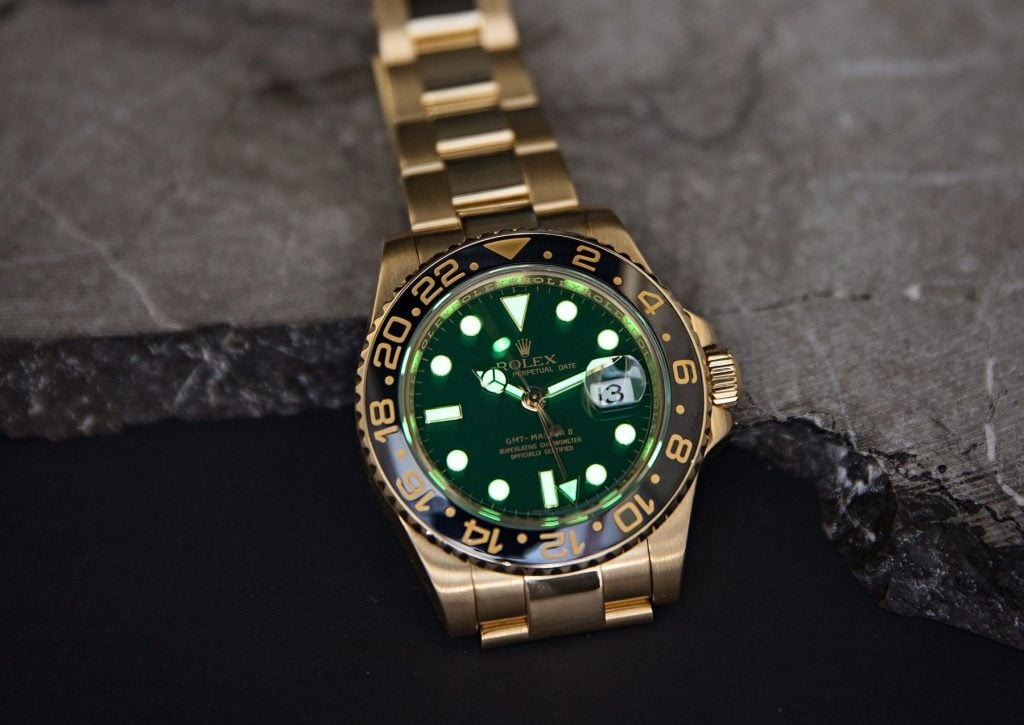The Rolex Luminous Replica Watches
Radium was combined with zinc sulfide, which allowed for a brighter glow than pure radium alone. You can see this on a number of vintage Rolex watches that have managed to survive to this day and still have their original luminous dials and hands.Let’s take a closer look at the various luminous materials Cheap Rolex Replica has used over the past several decades, from Radium to Chromalight, and everything in between.

Radium – The First Rolex Luminous Material
The lume used on vintage Rolex watches was radium-based, and radium remained the standard for nearly all Rolex lume until 1963, when growing health concerns forced a shift away from it. During the early 1900’s, the effects of radiation exposure were not well understood, and radium was frequently marketed as a magical “cure-all” intended for human ingestion.

Although there were safety measures in place, growing health concerns pushed Rolex to abandon radium altogether in 1963. With radium ruled unsafe, tritium became the luminous material of choice for Rolex Replica Watches. Just like radium, tritium was also radioactive; however, it came with a much lower level of radiation and a much shorter half-life.
Tritium – A Safer Radioactive Alternative
While tritium was exponentially safer than radium, it only had a half-life of a little over twelve years. This meant that after just a couple decades, only a tiny fraction of the initial luminescence would remain. Additionally, as tritium ages, the color changes, which creates interesting patinas on the luminous markers of older Rolex Replica. Some like to re-lume watches, while others love the patina.

Despite being substantially safer than radium, tritium was still radioactive, and as a result, many watchmakers of the time (Rolex included) marked the dials with an indication of the level of radioactivity emitted by the watch, such as “T Swiss T”, or “Swiss T<25”.
Their new compound, called Luminova, was photoluminescent rather than radioactive, making it entirely harmless. Additionally, it was not prone to fading or discoloration like its predecessor,1:1 Replica Watches tritium and could instantly be recharged by just being exposed to light.
Super-LumiNova and Chromalight
Luminova was far saver and considered superior to tritium, with the only downside being that it required prior light exposure in order to glow, rather than glowing perpetually due to being radioactive and by 1998, Best Rolex Replica began using it on all of its watches.
Like its predecessor, Chromalight is photoluminescent and entirely safe; however, Chromalight differs in that it glows blue rather than green. Rolex Quality Replica Watches states that Chromalight starts glowing more quickly and lasts longer than Super-LumiNova and that the blue color makes it easier for human eyes to read in dim lighting. Chromalight is also celebrated for its crisp white hue during the daytime.

Beyond that, Chromalight gives modern Rolex watches a distinctive appearance in dark settings and brings yet another aspect of their production process in-house. Therefore, depending on the year of production of the specific watch, that is what makes a Rolex glow in the dark.
Whether it’s Tritium in a deep, buttery patina or stark white Chromalight, the luminous material on any Swiss Rolex Replica has a lot to say about the watch. In fact, there are many benefits to all of the materials mentioned in this article. It ultimately comes down to personal taste and the vibe you’re searching for in a Rolex watch. Which Rolex luminous is your favorite?
